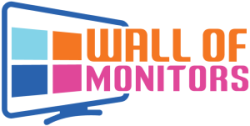Effective resource management can make or break your organization’s success. By optimizing your resources, you can maximize productivity, improve efficiency, and gain a competitive edge. But what does resource optimization entail? And how can you implement this strategy effectively in your operations? Dive in below to discover how you can take your resource management to the next level.
Understanding the Importance of Optimizing Resource Management
The optimization of resource management directly impacts your organization’s bottom line. Well-managed resources can lead to significant cost savings, improved delivery schedules, and increased overall project success rates.
Conversely, poor resource management can lead to project overruns and lower productivity, affecting your organization’s reputation and bottom line. Resource optimization can help mitigate these risks by ensuring the right resources are available at the right time, leading to more productive and successful projects.
In addition, optimal resource management helps in spotting potential issues early, thereby contributing to smoother project execution and improving workforce morale. It provides an opportunity to make the most out of your resources while ensuring a healthier work environment.
Lastly, resource optimization fosters business growth. By focusing on delivering value, resource optimization becomes a catalyst for improved customer satisfaction, business expansion, and an elevated market position.
Identifying Key Opportunities for Resource Optimization in Your Organization
Each organization possesses unique opportunities for resource optimization based on its business model, industry, and unique challenges. It is essential first to understand your organization’s current state and then identify gaps and opportunities for improvement.
While the specifics may differ, some typical opportunities generally include streamlining processes, enhancing workforce skills, minimizing waste, and optimizing technology use. Diagnostic tools and assessments can help identify these opportunities.
Inviting employee feedback is another effective way to identify potential areas for resource optimization. Engaging your workforce in the process can lead to more accurate insights and enhanced buy-in from the team.
Consequently, prioritization becomes crucial after identifying optimization opportunities. Key Performance Indicators (KPIs), project goals, business objectives, and available resources should guide this prioritization process.
Implementing Effective Techniques for Resource Optimization
Once opportunities are identified, implementing appropriate resource optimization techniques becomes the next step. Strategic planning and allocating resources based on demand, skills, and availability is pivotal.
Advanced scheduling and time management strategies can also play a significant role. Shielding your top performers from unnecessary disruptions and flexing resource usage based on project demands can bolster productivity.
Another crucial technique is ongoing training and development. Equipping your workforce with the latest industry knowledge and skills creates more adaptable and efficient teams.
Moreover, fostering a culture of continuous improvement where each team member understands their contribution towards the organization’s success and is motivated to enhance their performance will massively gear the company towards optimization.
Leveraging Digital Tools for Enhanced Resource Management
Modern technology and digital tools significantly alighacham94 enhance resource management capabilities. Resource management software can automate many repetitive tasks, allowing you to focus on strategic decisions.
Data analytics can deliver valuable insights into resource optimization. By tracking your resources in real time, you can make informed decisions and proactively manage your resource pool.
In addition, digital collaboration tools can streamline project execution and enhance team coordination. Leveraging technologies like cloud computing, artificial intelligence, and remote working tools can lead your organization toward optimal resource utilization.
Finally, integrating your resource management system with other operational tools can provide a holistic view of your organization, facilitating more effective management and optimization.
Monitoring and Continual Improvement in Resource Management Strategy
Beyond implementation, continual monitoring of your resource management strategy is key to assuring its effectiveness. Regular assessments can identify areas where your strategy may need adjustments
Monitoring benchmarks and KPIs can give valuable insights into the performance of resources. With this data, improvements can be made in areas that are lacking, while successful strategies might be expanded or replicated elsewhere.
Moreover, it’s important to stay ahead of industry trends and regularly update your strategy based on new information or changes in your business environment. This approach ensures your resource management remains effective despite changing situations.
Ultimately, continual improvement underscores a successful resource management plan. Not just a one-time effort, resource optimization requires a commitment to ongoing refinement and enhancement to achieve long-term success.
Overall, optimizing resource management can lead to substantial benefits for your organization, from cost savings and improved efficiency to enhanced employee morale and business growth. Through strategic identification of opportunities, effective implementation, leveraging digital tools, and commitment to continual monitoring and improvement, you can transform your resource management, ultimately elevating your organization’s success.

